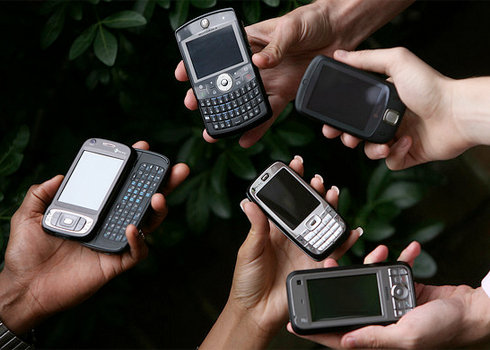Americans can’t seem go anywhere without talking about politics these days. Whether they were texting or tweeting, talking or typing, one in four Americans used a cell phone for some purpose related to the elections this year, according to a Pew Internet poll released today.
According to the survey, 26% of all Americans used a mobile phone to learn or communicate about the midterm elections. Of the entire U.S. population, 82% own a cell phone, according to the poll.
In general, the results reinforce what was already widely known — that cell phones have become extremely versatile devices that are permeating more and more facets of daily life. But on a deeper level, the results show that mobile phones are emerging as a new frontier in politics, whether for reading the news, tracking campaigns or even donating to candidates.
The most common way Americans used their cell phones in relation to the elections was to notify others that they had voted. Fourteen percent of adults said they’d used a cell phone for that purpose. But since only a portion of cell phone users voted — the poll pegged that number at 71% — Pew calculated that 27% of all mobile phone users who cast a ballot used their phones to tell others they’d done so.
Twelve percent of adults surveyed, or 15% of all cell phone owners, said they used a mobile phone to stay updated on election news. And among those who said they use text messages, 18% reported using them to communicate with others about the midterms.
Not surprisingly, younger demographics were far more likely to use cell phones for a political purpose.
Among cell phone users ages 18-29, 24% reported using their phones to track election news, and 58% said they told others via their mobile phones that they’d voted. Sixteen percent of cell phone users between the ages of 30 and 49 said they followed political news with their cell phones, and 12% of respondents 50-64 years old did the same. In the oldest demographic, cell phone users 65 years old and above, only 6% said they kept up on election news with their phones.
Those who used mobile devices for a political purpose also tended to be better educated than their counterparts. Thirty-five percent of college graduates and 33% of those who completed some amount of college said they used their phones in some political capacity, while only 19% of those with just a high school diploma and 15% who never completed high school did the same.
Political cell users were also, perhaps obviously, more tech savvy as a group.
From the Pew press release:
92% of them have broadband at home vs. 60% of all adults; 72% own
laptops vs. 53% of all adults…10% own iPads or another tablet computer…and 14% use Twitter vs. 8% of all internet users
As smart phones continue to devour a larger share of the overall cell phone market, the number of people who use mobile devices for something related to politics should spike as well. According to a December Nielsen report, smart phones now make up about 30% of the entire cell phone market. But as that number grows, and more people begin using powerful phones loaded with apps, so too should the number who send and receive information about politics.
Other key findings from the poll include:
-Six percent of adults, or 10% of cell phone users, used a mobile device to relate conditions at polling places, such as long lines.
-Four percent of adults and 5% of cell phone users used a mobile device to track election results as they unfolded.
-Two percent of adults used a phone app to receive updates from a campaign or political group.
-One percent of adults used text messaging to donate money to a campaign.
Pew interviewed 2,257 adults nationwide from November 3-24, including 1,918 cell phone users. The margins of error for each population group are 2.0% and 3.0%, respectively.









